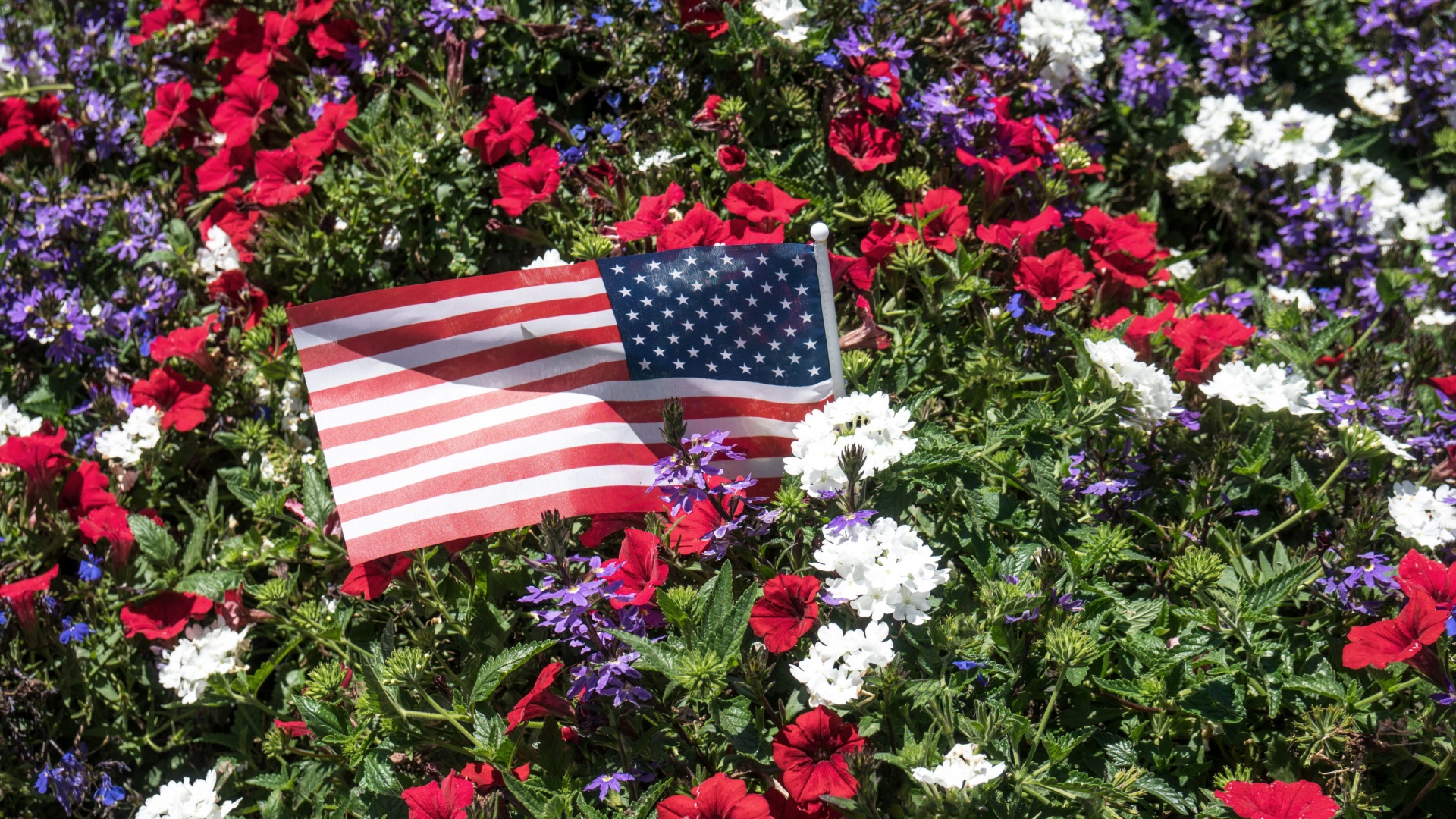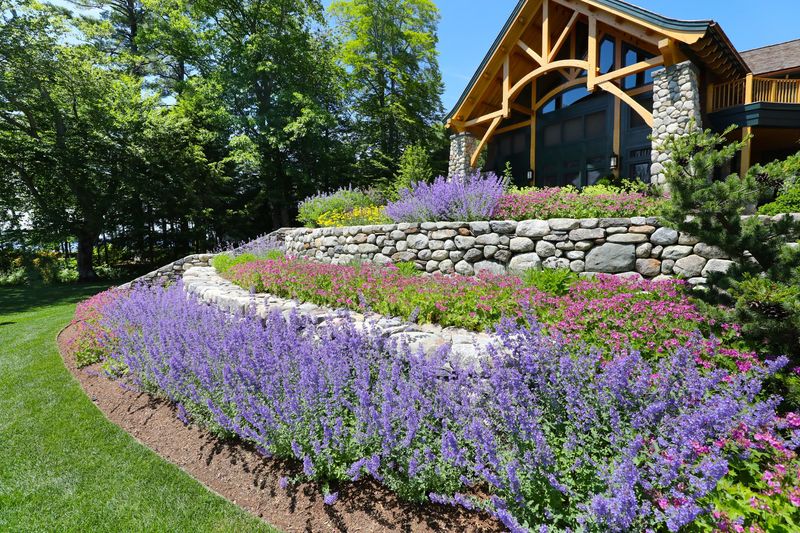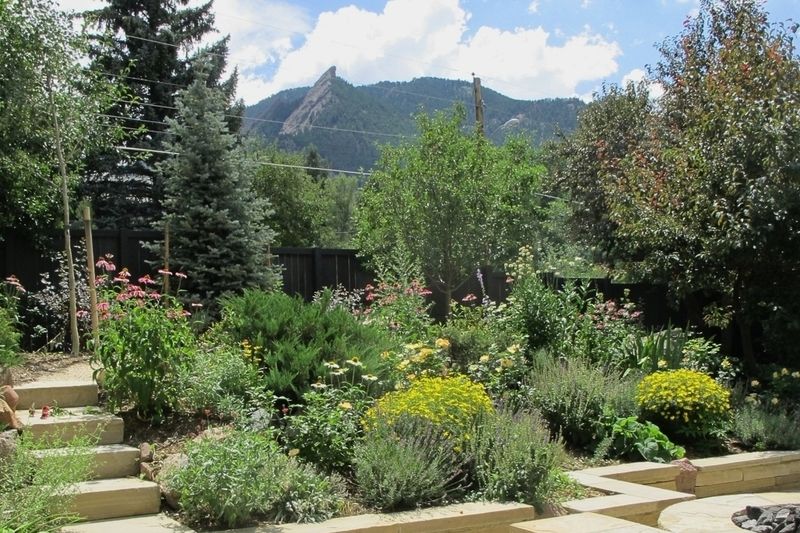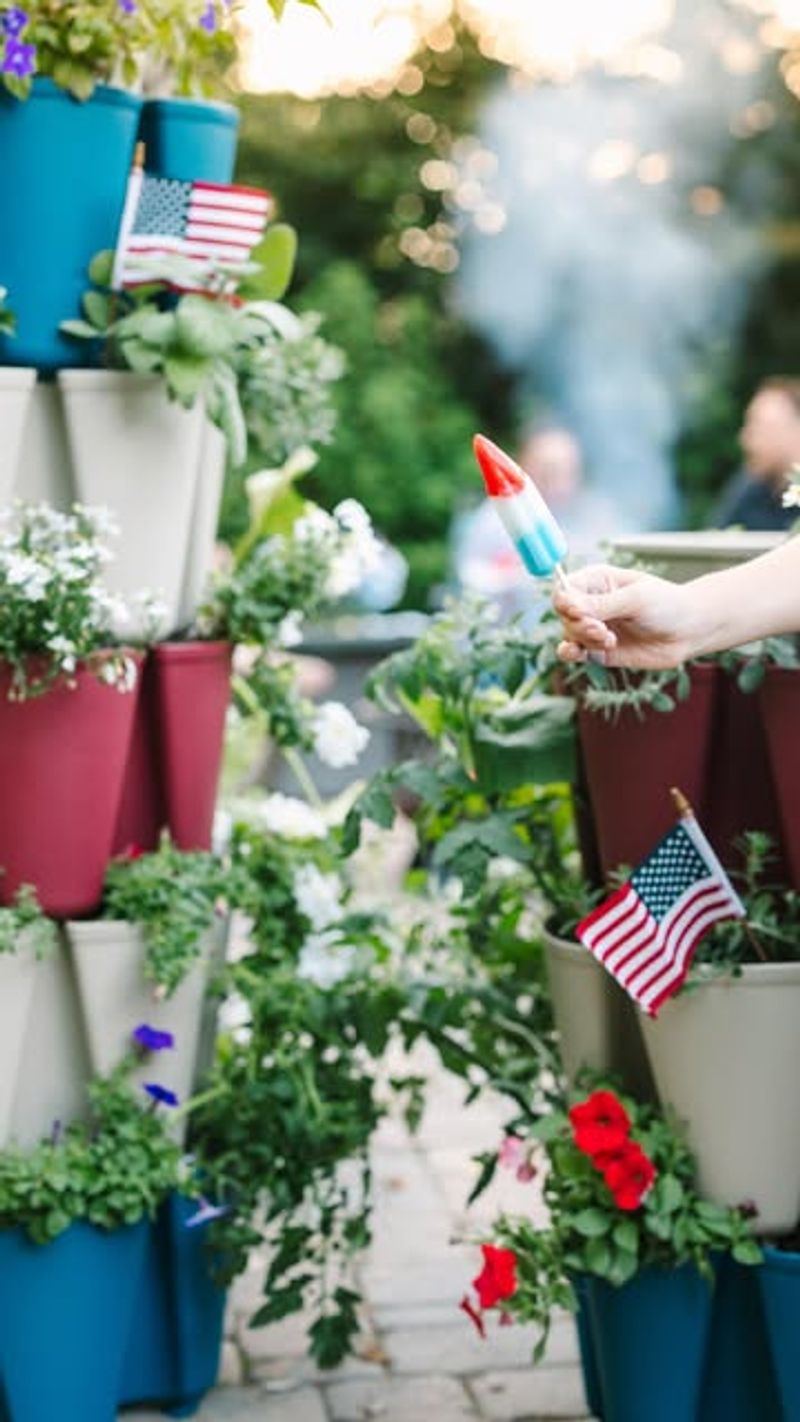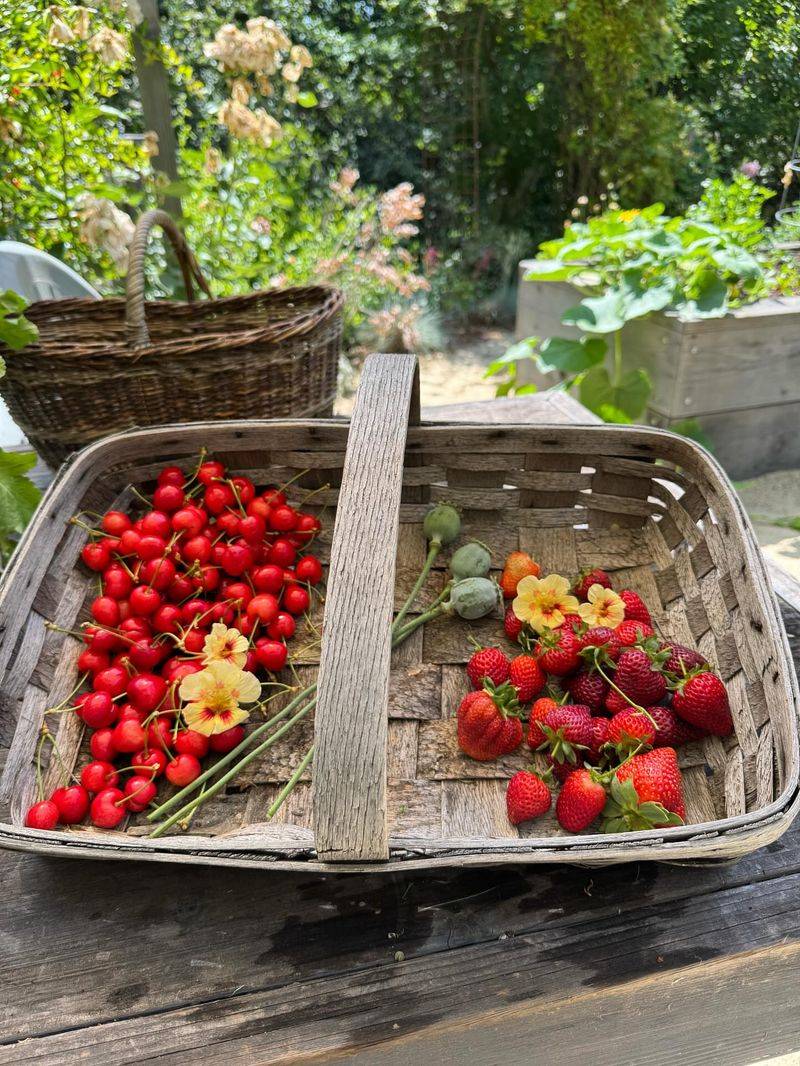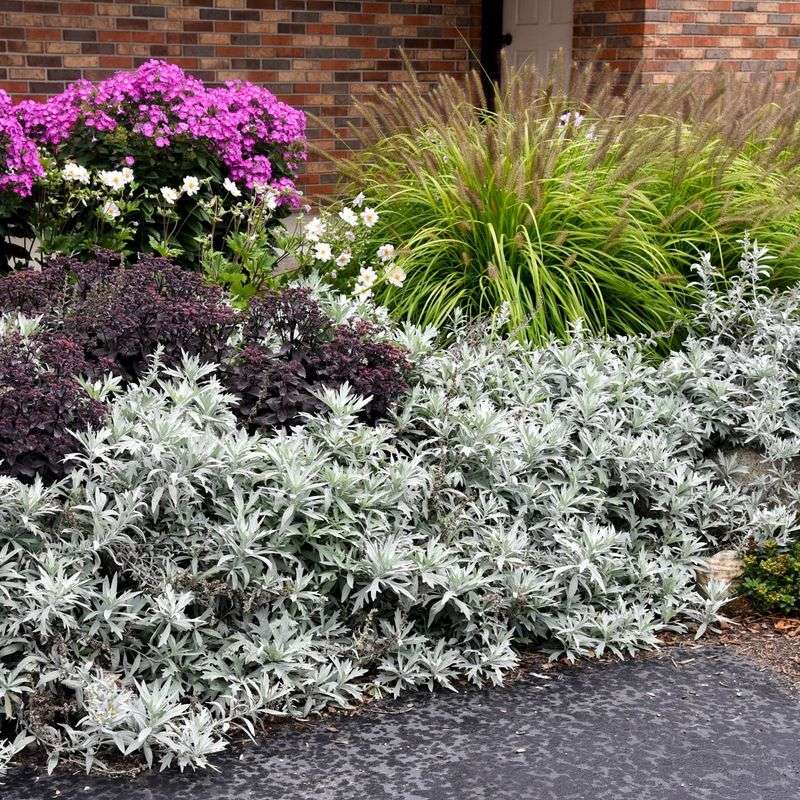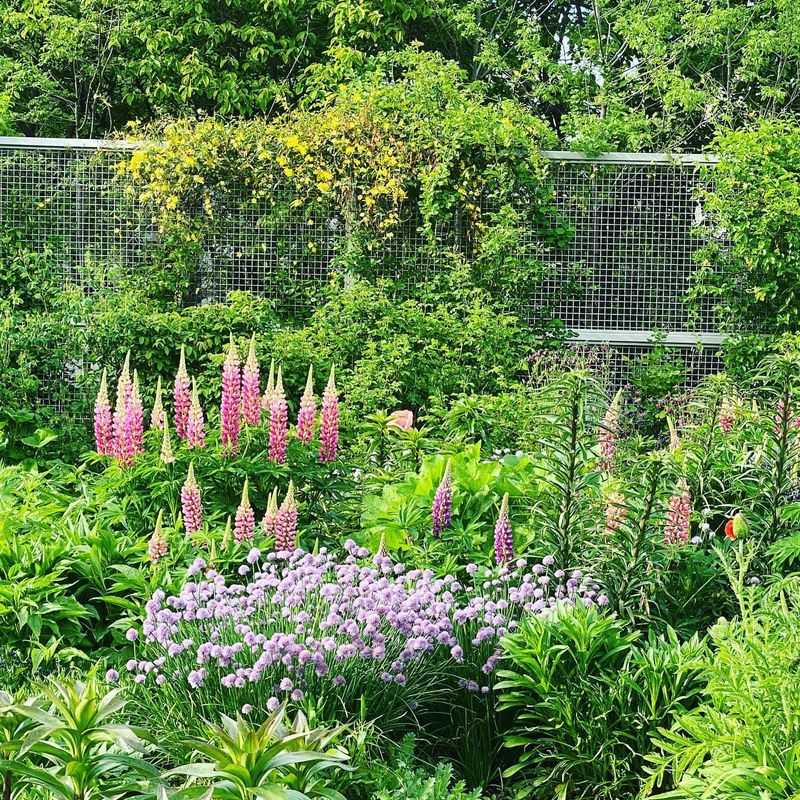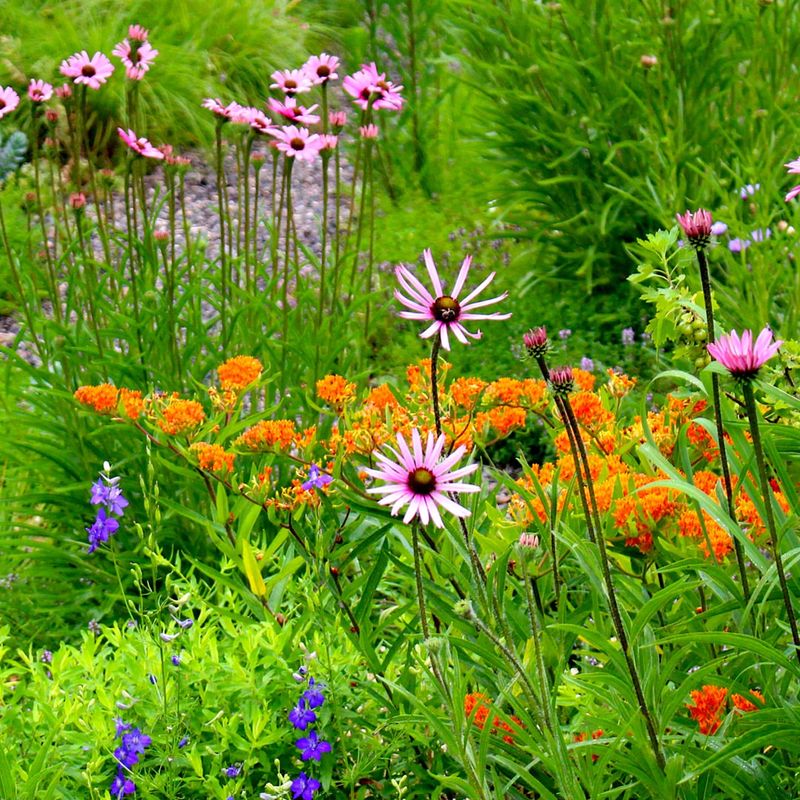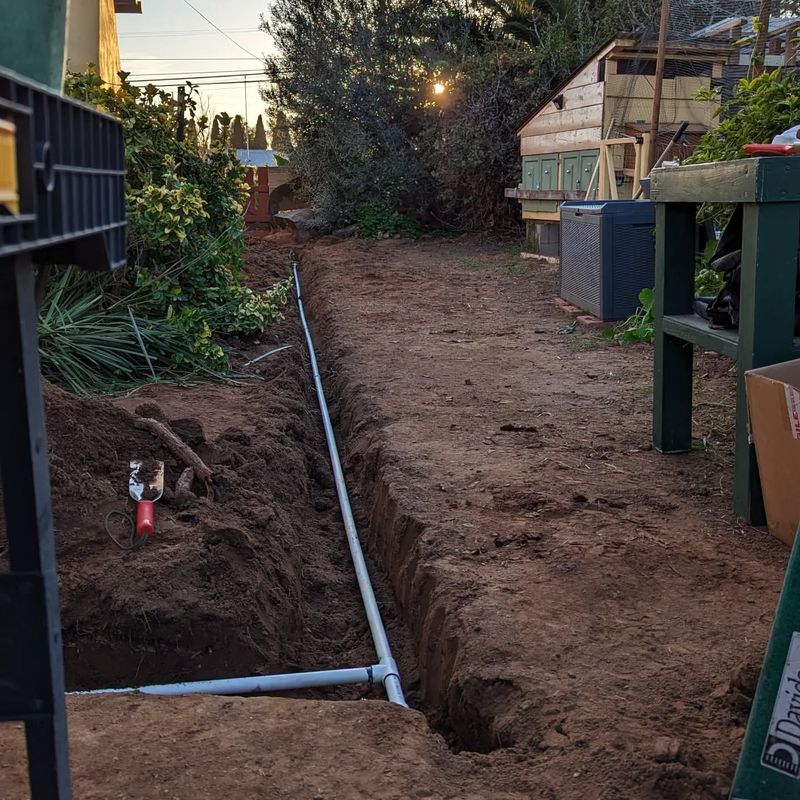Want your garden to celebrate the Fourth of July—and keep blooming long after the fireworks fade? With the right plant combos and design tips, you can create a red, white, and blue flower bed that’s patriotic and long-lasting.
These 15 easy ideas will help you build a showstopping display that shines all summer.
1. Pick Long-Blooming Varieties
Choosing flowers with extended blooming periods ensures your patriotic display lasts beyond just Independence Day. Petunias, geraniums, and salvias offer weeks of color rather than days. Look for varieties labeled as ‘continuous bloomers’ or ‘self-cleaning’ to reduce maintenance.
These plants keep producing new flowers without requiring constant deadheading.
Heat-tolerant options like verbena and lantana will maintain their vibrant colors even during August’s scorching temperatures, keeping your red, white and blue theme intact all season.
2. Layer Plants By Height
Strategic arrangement creates visual interest while ensuring all plants receive adequate sunlight. Tall blue delphiniums or salvias make perfect backdrops, medium-height white daisies or phlox fill the middle ground, and red petunias or begonias work beautifully in front.
This tiered approach prevents shorter plants from being overshadowed by taller neighbors. The natural cascade draws the eye through your garden’s patriotic palette.
Remember to account for mature sizes when planting – those tiny seedlings will expand considerably throughout summer!
3. Incorporate Drought-Resistant Choices
Summer heat can quickly stress water-hungry plants. Red yarrow, white gaura, and blue Russian sage thrive with minimal watering once established, making them perfect for sustainable patriotic gardens. Their deep root systems seek out moisture far below the soil surface.
Group these drought-tolerant options together to create efficient watering zones in your garden design. As a bonus, many drought-resistant plants attract beneficial pollinators like butterflies and bees, adding movement and life to your red, white, and blue display.
4. Mix Annuals With Perennials
Annuals provide immediate, abundant color while perennials return year after year. Red zinnias or salvia paired with white petunias give instant gratification, while blue delphinium and white coneflowers build long-term structure.
This combination approach ensures continuous blooming throughout summer. When one plant finishes its show, another takes center stage.
The perennials also reduce your workload and expenses in future years, allowing you to simply fill gaps with fresh annuals each spring for a refreshed patriotic display.
5. Add Patriotic Containers
Painted terracotta pots in red, white, or blue instantly amplify your theme. Group containers of different heights for dynamic visual interest, creating mini-displays that can be moved as needed throughout the season.
Old wooden crates painted in patriotic colors make charming planters. Line them with landscape fabric before adding soil to prevent wood rot and ensure proper drainage.
For portable bursts of color, hang blue and white striped planters filled with cascading red verbena from shepherd’s hooks around your garden or patio.
6. Include Edible Elements
Red strawberries, white cauliflower, and blue borage flowers create a deliciously patriotic garden that serves double duty. Blueberries offer both ornamental value and tasty harvests with their white spring flowers and blue summer fruits.
Red cherry tomatoes trailing from hanging baskets add unexpected visual interest. Their bright color perfectly complements white sweet alyssum and blue lobelia planted below.
Herbs like silvery-white sage and purple-blue lavender contribute subtle color while providing fragrance and culinary usefulness to your patriotic display.
7. Create Cooling Color Blocks
Grouping plants by color creates bold visual impact that’s visible from a distance. Dedicate sections of your garden bed to solid blocks of red, white, and blue rather than scattering individual plants.
Five to seven plants of the same variety clustered together creates the strongest effect. This approach also simplifies care since grouped plants often share watering and fertilizing needs.
For maximum drama, arrange your color blocks in a flag-inspired pattern with alternating stripes of red and white flowers, with a blue corner section representing the star field.
8. Don’t Forget Foliage Colors
Leaves provide consistent color when blooms fade. Silvery-white dusty miller maintains its striking appearance all season, while deep burgundy heuchera offers rich red tones even without flowers.
Blue fescue grass adds texture and true-blue color rarely found in flowers. These foliage plants create a reliable backdrop for your more ephemeral blooming varieties.
Variegated hostas with white-edged leaves thrive in shady spots where most red and blue flowers struggle. Their contribution to your patriotic scheme works even in challenging garden locations.
9. Plan For Succession Blooming
Staggered blooming schedules ensure continuous color. Early summer stars like red oriental poppies pass the baton to mid-season white shasta daisies, which eventually yield to late-blooming blue asters.
Research each plant’s flowering period before purchasing. Create a simple timeline chart to visualize your garden’s color progression throughout summer months.
Include quick-growing fillers like white cosmos that can be direct-sown multiple times. These provide fresh blooms when needed and fill gaps left by spring flowers that have finished their show.
10. Incorporate Evening Elements
Moonflowers unfurl their massive white blooms at dusk, adding drama to summer evenings. Their night-time fragrance attracts fascinating moths, creating magical moments for twilight garden enjoyment.
Red dianthus and blue salvia remain visible as darkness falls. Consider adding solar-powered red, white, and blue garden lights to extend your patriotic display into nighttime hours.
White-flowering plants particularly glow in moonlight, creating natural illumination. Position these near seating areas to maximize their impact during evening gatherings throughout summer.
11. Use Heat-Tolerant Varieties
August’s scorching temperatures challenge many flowers. Red lantana, white vinca, and blue plumbago laugh in the face of heat waves, maintaining vibrant colors when other plants wilt.
These sun-lovers actually bloom more prolifically during intense heat. Their tough nature means less watering and babying during summer’s most challenging months.
Plant them in the hottest, most exposed sections of your garden where other varieties might struggle. Their resilience ensures your patriotic display remains vibrant even during the dog days of summer.
12. Incorporate Patriotic Garden Art
Weather-resistant decorations extend your color scheme beyond plants alone. Painted garden stones, small American flags, or red-white-blue pinwheels add instant patriotic flair and fill spaces while plants mature.
Seek items that serve double duty – a blue gazing ball reflects light while adding color, and a white trellis provides structural support for climbing red roses. These permanent elements maintain your theme between blooming cycles.
Consider creating mosaic stepping stones in patriotic patterns. They’ll guide garden visitors through your display while contributing to the overall red, white, and blue motif.
13. Choose Native Alternatives
Native plants require less water and maintenance once established. Red cardinal flower, white boneset, and blue wild indigo naturally evolved for your local conditions, making them resilient choices for long-lasting displays. These indigenous options support local pollinators and wildlife.
Butterflies, bees, and birds will flock to your patriotic garden, adding movement and ecological value. Many native plants have deeper root systems than their exotic counterparts.
This allows them to access water sources unavailable to shallow-rooted varieties, helping them thrive through summer’s heat.
14. Mulch For Moisture Retention
A 2-3 inch layer of mulch dramatically reduces watering needs. Red cedar mulch not only conserves moisture but adds a complementary color to your patriotic scheme.
Mulching suppresses weeds that compete with your display plants for nutrients and water. Apply it after soil has warmed in late spring for best results.
For white elements, consider decorative white marble chips in select areas. Blue slate chips can similarly incorporate your theme color while serving the practical purpose of moisture retention in this functional yet decorative approach.
15. Install Proper Irrigation
Soaker hoses or drip systems deliver water directly to root zones without wasting a drop. Position these before planting and cover with mulch for maximum efficiency and invisibility. Consistent moisture prevents stress that can reduce flowering.
Program timers to water deeply but infrequently, encouraging roots to grow downward rather than remaining vulnerable near the surface. Group plants with similar water needs together.
This smart hydrozoning approach ensures thirsty red bee balm isn’t competing with drought-tolerant white yarrow, allowing each patriotic plant to thrive in appropriate conditions.

